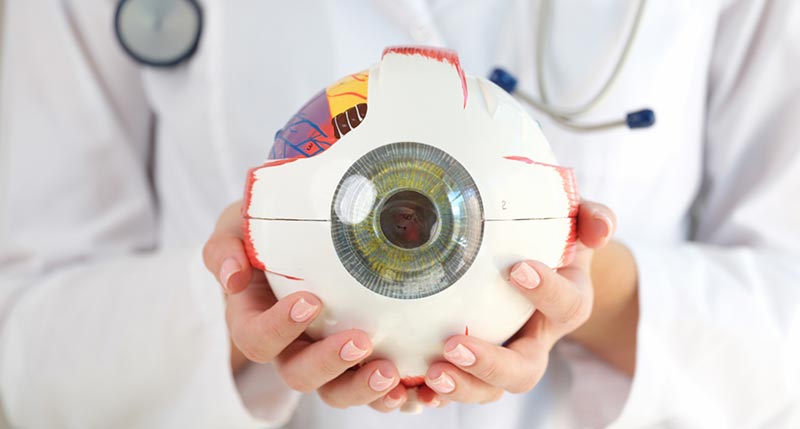Andalusia Optometrist: Specialist Eye Doctors in Your Area
Wiki Article
The Pros and Cons of Various Refractive Surgical Procedures for Boosted Eyecare

LASIK Surgery
LASIK surgical procedure is a typically performed refractive treatment that intends to remedy vision issues such as astigmatism, farsightedness, and nearsightedness. This medical method has gotten appeal as a result of its performance in supplying clients with clearer vision and lowering their dependency on glasses or contact lenses. Throughout the treatment, a thin flap is created on the cornea, and a laser is made use of to improve the underlying tissue, correcting the refractive mistake. The flap is then repositioned, enabling for fast healing and very little discomfort for the person.Among the main benefits of LASIK surgical treatment is the fast improvement in vision experienced by several patients. A lot of individuals discover a considerable improvement in their vision soon after the treatment, with marginal downtime required for healing. Additionally, LASIK is understood for its high success rate and reduced incidence of issues when executed by competent surgeons. However, like any kind of operation, LASIK also lugs some risks, including dry eyes, glare, halos, and under or overcorrection of vision. It is crucial for individuals considering LASIK surgical procedure to undergo a detailed analysis by an eye care expert to figure out if they appropriate candidates for the procedure.
PRK Treatment
The PRK treatment, also referred to as Photorefractive Keratectomy, is a kind of refractive surgery that intends to deal with vision problems comparable to LASIK surgical treatment. Unlike LASIK, which involves developing a flap in the cornea, PRK works on the surface area layer of the cornea. During the PRK treatment, the external layer of the cornea, called the epithelium, is removed to allow improving of the underlying corneal cells with an excimer laser. This reshaping assists to correct refractive mistakes such as farsightedness, astigmatism, and nearsightedness.One of the advantages of PRK over LASIK is that it removes the risk of flap-related complications given that no flap is developed throughout the surgical treatment. Despite the longer recuperation period, PRK can be an appropriate option for people looking for vision modification surgical treatment.
SMILE Surgical Procedure
A cutting-edge refractive surgical procedure strategy acquiring appeal in the area of ophthalmology is SMILE Surgery. Small Incision Lenticule Removal (SMILE) is a minimally intrusive procedure that fixes vision by improving the cornea utilizing a femtosecond laser. Unlike typical LASIK surgery, SMILE Surgical treatment entails creating a little cut in the cornea to remove a lenticule, which leads to much less disturbance to the corneal structure and potentially quicker recovery times.Among the key advantages of SMILE Surgery is its capacity to treat nearsightedness (nearsightedness) and astigmatism with high precision, bring about excellent aesthetic end results for patients. The minimally intrusive nature of the treatment likewise lowers the threat of difficulties such as completely dry eye syndrome, making it a positive option for people looking for refractive surgical procedure.

LASEK Strategy
Having actually discovered the benefits and factors to consider of SMILE Surgical treatment, an additional notable refractive surgical treatment method worth analyzing is the LASEK Technique. LASEK, which represents Laser-Assisted Subepithelial Keratectomy, is a form of laser eye surgery that aims to fix refractive errors such as myopia (nearsightedness), hyperopia (farsightedness), and astigmatism.Unlike LASIK, LASEK does not entail producing a corneal flap. Rather, during a LASEK procedure, the specialist utilizes a diluted alcohol remedy to loosen the thin external layer of the cornea, understood as the epithelium. This layer is then carefully relocated apart to permit the laser to reshape the underlying corneal cells. When the cornea has actually been reshaped to the wanted level, the epithelial layer is rearranged.
One of the primary benefits of LASEK is that it can be ideal for individuals with thin corneas that may not be great prospects for LASIK. Additionally, LASEK usually leads to minimal post-operative pain and a quicker healing time contrasted to PRK. The visual recovery process with LASEK might be a little longer than with LASIK.
Implantable Get In Touch With Lenses
Implantable Call Lenses provide a lasting vision improvement option for people looking for an option to standard call lenses or glasses. These lenses, also referred to as phakic intraocular lenses, are operatively put right into the eye to remedy refractive errors such as nearsightedness (nearsightedness), hyperopia (farsightedness), and astigmatism. eye doctors in andalusia. Unlike typical call lenses that rest on the surface of the eye, implantable get in touch with lenses function within the eye itself, offering clear vision without the demand for daily upkeep or removal
One of the key advantages of implantable call lenses is their durability. When inserted, they can remain in the eye indefinitely, supplying stable and consistent vision correction. In addition, these lenses can be a superb choice for people who are not great prospects for laser eye surgical treatment or who favor a relatively easy to fix vision adjustment procedure.
Nevertheless, implantable call lenses do carry some dangers, including the possibility for cataracts or increased eye stress. It is important for individuals considering this alternative to talk to an eye care specialist to establish if implantable call lenses are the ideal selection for their particular needs and eye health.
Conclusion
Finally, each type of refractive eye center andalusia surgical treatment has its own advantages and downsides. LASIK surgical procedure is prominent for its fast healing time, while PRK treatment may appropriate for individuals with slim corneas. SMILE surgical procedure uses very little pain throughout the procedure, however LASEK technique might have a longer recovery process. Implantable call lenses supply an option for those that are not suitable prospects for typical surgical treatments. Patients should seek advice from their eye treatment company to identify the most effective option for their specific requirements.
In General, SMILE Surgery offers a promising choice for people looking to improve their vision through refractive surgery.
Report this wiki page